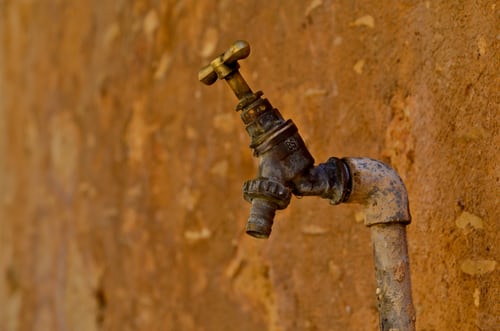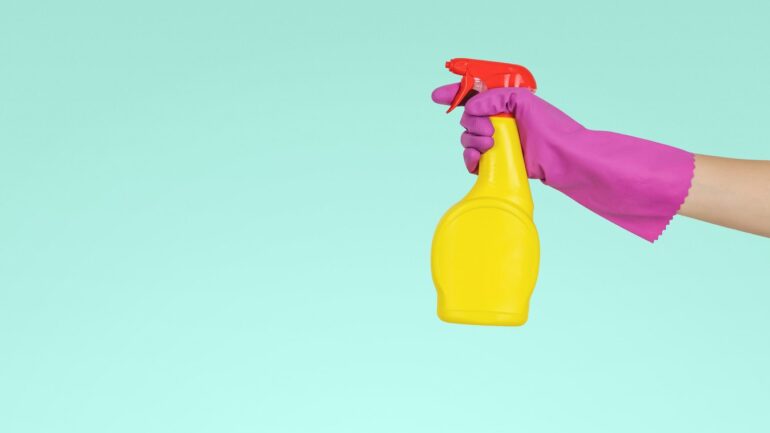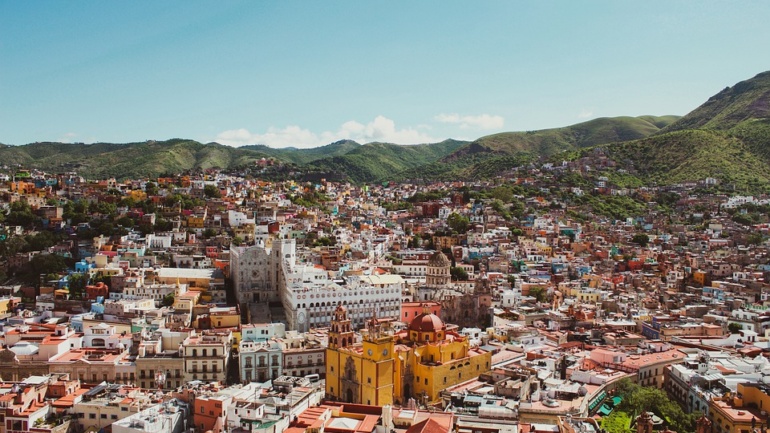By Rose Delaney, Staff Writer & Researcher for Save The Water™ | March 8, 2019
What’s Household Water Treatment and Storage? (HWTS)
In a nutshell, “Household Water Treatment and Storage” is an important public health initiative that improves global access to water. Significantly, it improves the quality of water by treating it in the home.
At present, 780 million people worldwide can’t access a clean and safe water source.1 Consequently, close to 2 million children under the age of five die from poor water and hygiene every year.2
Can you imagine hundreds of children in the United States dying from a preventable disease such as diarrhea everyday?
Evidently, most people in developed countries such as the United States access clean, safe water on a daily basis. Thus, why can’t people in developing countries such as Kenya do the same?
For one thing, the United Nations Sustainable Development Goal 6 (SDG 6) ensures the “availability of water and sanitation for all.”
In the same fashion, Household Water Treatment and Storage (HWTS) tackles the challenge of unclean and thus unsafe water in developing countries.3
Household Water Treatment and Storage (HWTS): Many Benefits to the Developing World
Significantly, HWTS practices prevent widespread water-related diseases. Moreover, it contributes to poverty reduction and improved health across developing countries.4
In other words, less time spent trying to access clean water sources means more time for productive work. Additionally, clean water sources reduce healthcare costs caused by water-related diseases.5
Actually, HWTS reduces diseases such as diarrhea, cholera, and hepatitis E.6,7
Basically, educating and training people on hygiene and how to implement HWTS is essential. Also, importantly, HWTS can help save millions of lives by introducing clean water.
Household Water Treatment and Storage (HWTS) reduces prevalent waterborne diseases
First, let’s look at diarrhea. Undoubtedly, when people can’t access clean water, they don’t prioritize hand washing.1 In fact, about 842,000 people die each year from diarrhea as a result of poor sanitation.8
Evidently, children under five are most likely to get diarrhea. What’s more, a global estimate suggests that 19% of children die from diarrhea annually.
Specifically, 73% of these deaths occur in 15 developing countries.5,7 To be sure, implementing HWTS for hand-washing reduces diarrhea.
Second, let’s look at schistosomiasis. This disease harms over 700 million people in 74 countries.9 That is to say, its devastating effects compare to malaria.
Basically, snails carrying parasitic worms in contaminated freshwater cause this disease. In developing countries, people use local water sources to urinate and to defecate. Therefore, the disease spreads quickly.9
Surprisingly, schistosomiasis is a “neglected tropical disease.” Indeed, it causes bladder cancer as well as kidney and liver problems.9
Additionally, infected children suffer from anemia and malnutrition. Therefore, improving access to household toilets can significantly reduce this disease.
Lastly, let’s look at Dengue Fever. Generally, insects that breed in household water containers spread this disease.10 Overall, 2.5 billion people live in regions at risk of dengue fever.10
Evidently, symptoms include fever, mild bleeding and muscle pain. Even more, these symptoms can progress to severe bleeding, shock, and death.
Interestingly enough, one method to reduce the disease includes safely covering water containers.4,10
Five Methods to Implement Household Water Treatment and Storage (HWTS)
| Method | Case Study |
|---|---|
| Chlorination use (i.e. adding chlorine to water) disinfects public water supplies. Also, it helps eliminate waterborne disease, reduces viruses and bacteria, and is relatively inexpensive.4 | For example, a nongovernmental organization improved water quality in rural Haitian communities. In summary, small-scale chlorination was introduced despite natural disasters and political unrest. |
| Filtration is the inexpensive process of removing harmful chemicals and pollutants from water. However, more studies are needed.4 | According to a study in Bolivia, users of micron ceramic candle-shaped filters experienced a 64% reduction in diarrhea.4 |
| Solar disinfection (SODIS) allows people to treat and drink water from small, narrow-necked bottles.2 | For example, in Sikkim, India, 65 children under five took part in a SODIS intervention trial. After 8 weeks, SODIS users saw a reduction in diarrhea of about 76%.11 |
| Filtration and chlorination is a combined approach that reduces bacteria.2 | For example, local Haitians communally accepted a purifier. In fact, a study conducted on the purifier outlined a 56% reduction in diarrheal disease.2 |
| Flocculation and Chlorination combines a coagulation step for particle removal (flocculation) with a chlorination step(s) for disinfection. For this reason, it offers high removal rates of bacteria in contaminated water.2 | According to a study on point-of-use water treatment in West Kenya, this method is best for 4 reasons: (1) works well in contaminated waters, (2) requires little infrastructure,(3) serves rural zones, and (4) encourages vulnerable communities to make water safe.12 |
To sum up, we can achieve HWTS for everyone. But we must educate and communicate behavioral changes about hygiene and sanitation in developing countries.
What you can do to help
- Research to keep yourself informed on the countries that need HWTS.
- Advocate for clean water efforts in the United States and overseas.
- Donate to Save the Water™ so that HWTS innovation and progress in developing countries is made public.
References
- CDC. April 11, 2016. “Global WASH Fast Facts.” CDC. https://www.cdc.gov/healthywater/global/wash_statistics.html
- Daniele Lantagne. December 2012. “Use of Household Water Treatment and Safe Storage Methods in Acute Emergency Response Case Study Results from Nepal, Indonesia, Kenya and Haiti.” https://bit.ly/2XHIxzt
- United Nations. “Sustainable Development Goals.” United Nations. https://sustainabledevelopment.un.org/sdg6
- Daniele S. Lantagne, Robert Quick, and Eric D. Mintz. July 7, 2011 “Water Treatment and Safe Storage Options in Developing Countries: A Review of Current Implementation Practices.” Wilson Center.https://www.wilsoncenter.org/sites/default/files/WaterStoriesHousehold.pdf
- Guangzhe Chen. March 22, 2017. “The Numbers are in: Water is key to Poverty Reduction and Health.” The World Bank. http://blogs.worldbank.org/water/water-key-poverty-reduction-and-health
- Daniele Lantagne and Travis Yates. September 11, 2018. “Household Water Treatment and Cholera Control.” The Journal of Infectious Diseases.
https://academic.oup.com/jid/article/218/suppl_3/S147/5095273 - Laura Guerrero-Latorre, Eloy Gonzales-Gustavso et al. July 2016. “UV disinfection and flocculation-chlorination sachets to reduce hepatitis E virus in drinking water.” International Journal of Hygiene and Environmental Health.
https://www.sciencedirect.com/science/article/pii/S1438463916300256 - Cynthia Boschi-Pinto et al. September 2008. “Estimating Child Mortality due to Diarrhea in Developing Countries.” https://www.who.int/bulletin/volumes/86/9/07-050054.pdf?ua=1
- Centers for Disease Control and Prevention. June 18, 2018. “Parasites-Schistosomiasis.” Global Health-Division of Parasitic Diseases. https://www.cdc.gov/parasites/schistosomiasis/disease.html
- Carol DerSarkissian. February 05, 2018. “Dengue Fever.” WebMd. https://www.webmd.com/a-to-z-guides/dengue-fever-reference#1
- BB Rai, Ranabir Pal et al. September 2010. “Solar Disinfection Improves Drinking Water Quality to Prevent Diarrhea in Under-Five Children in Sikkim, India.” U.S. National Library of Medicine, National Institutes of Health.
https://www.ncbi.nlm.nih.gov/pmc/articles/PMC2946676/ - John A.Crump, George O.Oko et al. 2004. “Pilot Field Comparison of Traditional Combined Flocculation-Chlorination Point-of-Use Water Treatment on Drinking Water Quality in Western Kenya.” Centers for Disease Control and Prevention. https://bit.ly/2ES4Riq





